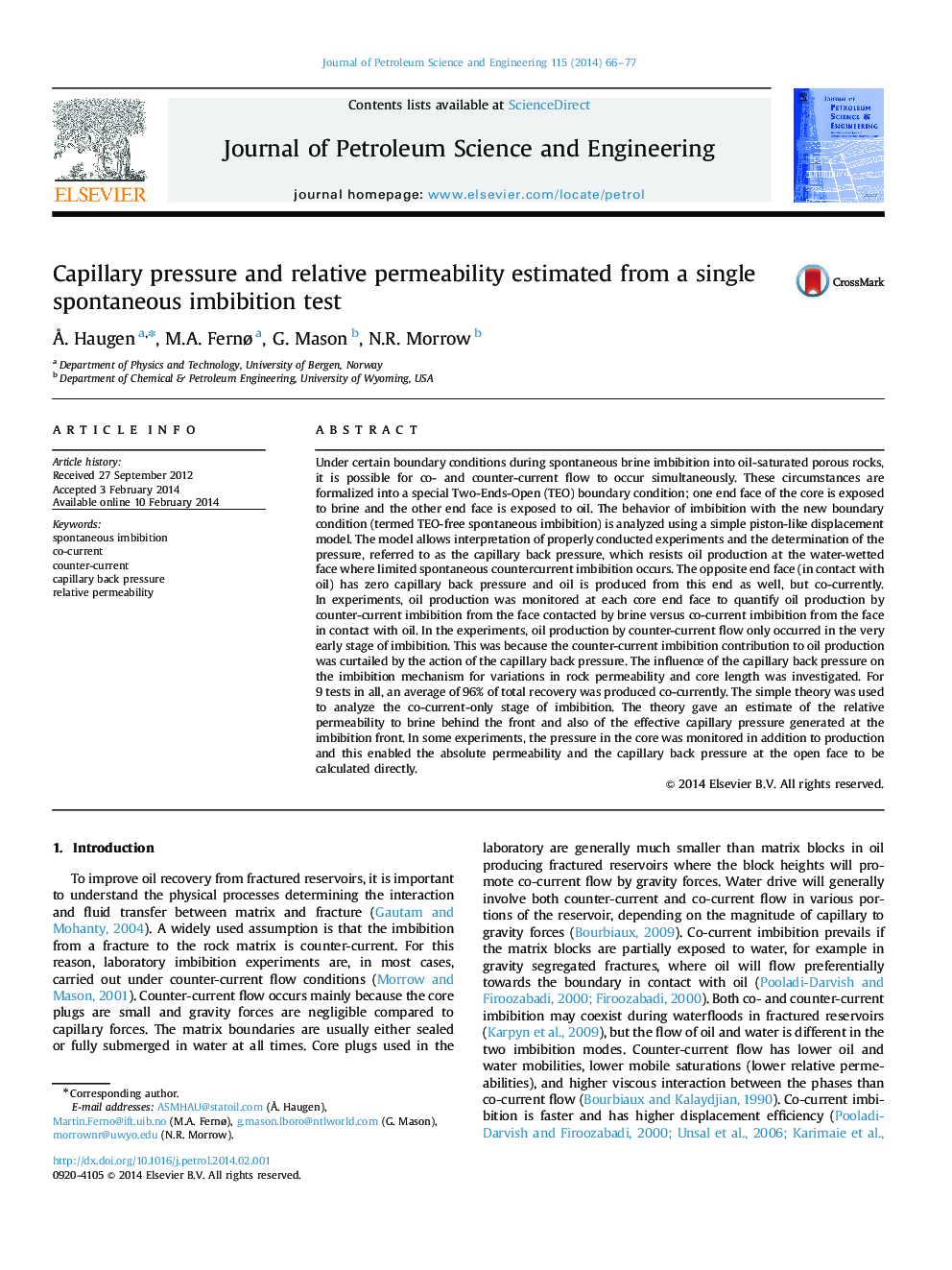| کد مقاله | کد نشریه | سال انتشار | مقاله انگلیسی | نسخه تمام متن |
|---|---|---|---|---|
| 1755150 | 1522826 | 2014 | 12 صفحه PDF | دانلود رایگان |
• Experimental setup to determine amount of co- and counter-current spontaneous imbibition.
• Explaining the existence of capillary back pressure at open face of porous media during spontaneous imbibition.
• A model that can be used estimate capillary pressure and relative permeability during spontaneous imbibition.
Under certain boundary conditions during spontaneous brine imbibition into oil-saturated porous rocks, it is possible for co- and counter-current flow to occur simultaneously. These circumstances are formalized into a special Two-Ends-Open (TEO) boundary condition; one end face of the core is exposed to brine and the other end face is exposed to oil. The behavior of imbibition with the new boundary condition (termed TEO-free spontaneous imbibition) is analyzed using a simple piston-like displacement model. The model allows interpretation of properly conducted experiments and the determination of the pressure, referred to as the capillary back pressure, which resists oil production at the water-wetted face where limited spontaneous countercurrent imbibition occurs. The opposite end face (in contact with oil) has zero capillary back pressure and oil is produced from this end as well, but co-currently. In experiments, oil production was monitored at each core end face to quantify oil production by counter-current imbibition from the face contacted by brine versus co-current imbibition from the face in contact with oil. In the experiments, oil production by counter-current flow only occurred in the very early stage of imbibition. This was because the counter-current imbibition contribution to oil production was curtailed by the action of the capillary back pressure. The influence of the capillary back pressure on the imbibition mechanism for variations in rock permeability and core length was investigated. For 9 tests in all, an average of 96% of total recovery was produced co-currently. The simple theory was used to analyze the co-current-only stage of imbibition. The theory gave an estimate of the relative permeability to brine behind the front and also of the effective capillary pressure generated at the imbibition front. In some experiments, the pressure in the core was monitored in addition to production and this enabled the absolute permeability and the capillary back pressure at the open face to be calculated directly.
Journal: Journal of Petroleum Science and Engineering - Volume 115, March 2014, Pages 66–77
